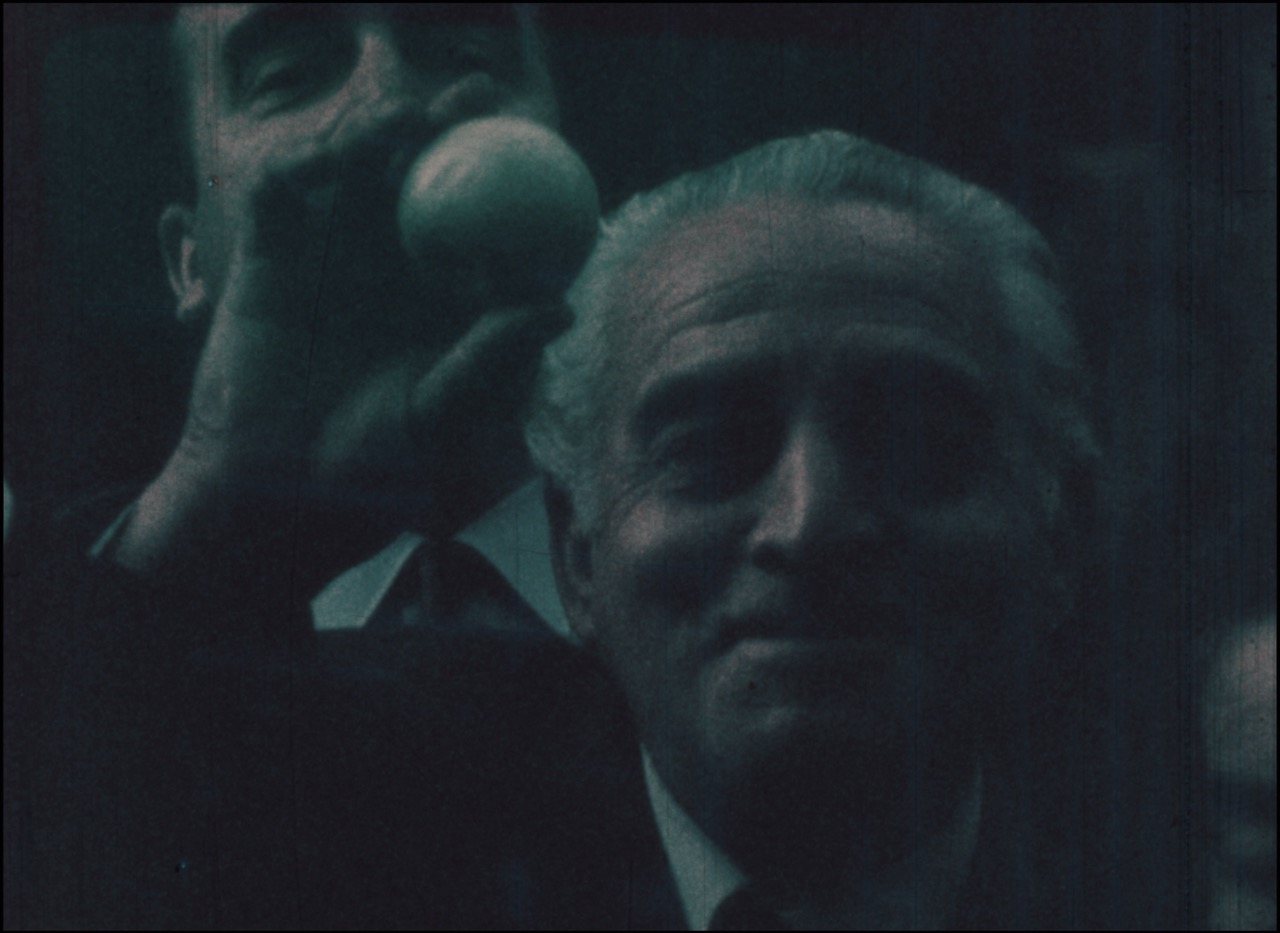Narcisa Hirsch
Narcisa Hirsch (Argentina) was a pioneering multidisciplinary artist and filmmaker born in Berlin, Germany in 1928. She relocated to Buenos Aires with her family in the 1930s. Across the last seven decades—a period marked by two military dictatorships in Argentina—Hirsch completed more than 60 films centered on themes including love, the body, death, movement, and the female gaze. Originally working as a painter, printmaker, and sculptor, she became increasingly interested in film during the documentation of collaborative public performances and happenings undertaken in the streets of Buenos Aires. One of these early performances, La Marabunta (1967), was shot by Raymundo Gleyzer, famed filmmaker and political opponent of Argentina’s military dictatorship (1976–1984), who disappeared in 1976. The piece featured a giant wire sculpture of a skeleton stuffed with live parrots and adorned in fruits, sandwiches, and candies. Hirsch frequently collaborated with other artists, including Werner Nekes, Claudio Caldini, and Marie Louise Alemann.
During her lifetime, Hirsch’s films often screened in non-institutional settings as part of informal and underground gatherings, with more recent presentations at major institutions such as the Museo de Arte Latinoamericano de Buenos Aires, Viennale, Museo Nacional Centro de Arte Reina Sofía, The Museum of Modern Art, and Media City Film Festival. She is the author of several books, including Philosophy Is a Useless Passion (2015). Established in 2019, Filmoteca Narcisa Hirsch was founded to preserve her films and provide a gathering space for artists. Until recently, much of Hirsch’s oeuvre only existed as camera originals. Many of her films are now consequently in fragile condition. The Filmoteca’s current restoration process, undertaken together with the University of Southern California, has brought to light the complexity of her practice, unearthing multiple versions of previously known films, entirely new discoveries, and unfinished films. As this project continues, one important objective is to restore many of the films to circulation as prints. In 2024, Hirsch passed away peacefully in her beloved Patagonia. Her contributions to an international community of filmmakers will not be forgotten. She is greatly missed.



Manzanas, Narcisa Hirsch, Argentina, 16mm > digital, 4.5 min, 1969
Hirsch’s first steps in filmmaking were documentations of her performances, happenings and collective actions in public spaces. In Manzanas, the artist and her collaborators Marie Louise Alemann and Walther Mejía handed out hundreds of apples to people walking past the corner of Florida and Diagonal Norte in Buenos Aires in 1968. “This apple is different from an everyday one / we are doing a work with the people / the work is the shared moment.”

A-Dios, Narcisa Hirsch, Argentina, 16mm > digital , 25 min, 1984
A man returns from war defeated. It is the end of battles and ideologies. According to Jungian psychotherapist Susana Balán, there are three archetypes of masculinity: Heroes, who are young, rebellious people who question the power of the gods; Gods, who have been young and were able to remain powerful into adulthood; and Men, who are the majority, who do not question society nor need to dominate it, the ones who concentrate on their work and their family. The artist added a fourth one to these three archetypes: Alchemists, the artists summoned to recreate the world and who are therefore marginalized, transmuting matter and making the invisible visible.
–Filmoteca Narcisa Hirsch
These films are co-presented with Filmoteca Narcisa Hirsch, Microscope Gallery, and Three Fold, Detroit.
Image credits: all artworks, stills, and portraits courtesy of Filmoteca Narcisa Hirsch © estate of Narcisa Hirsch.
View next: Madeleine Hunt-Ehrlich, as part of Media City Film Festival 27th Edition: Spotlight Series